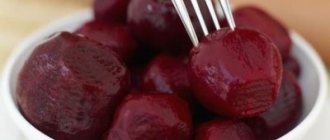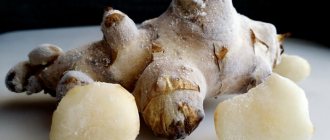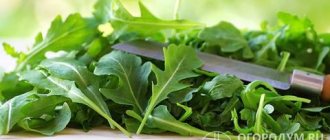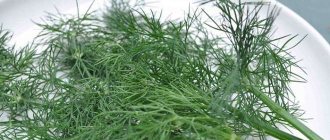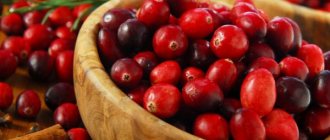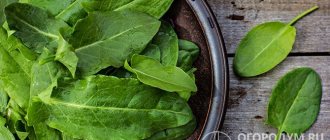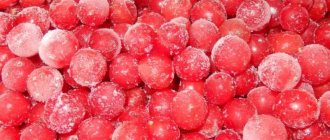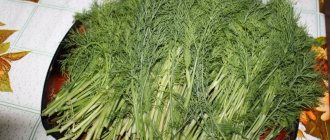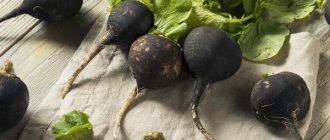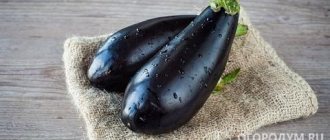Not so long ago, an interesting exotic berry appeared on Russian shelves - feijoa. It gained popularity not only due to its amazing taste, which combines light notes of kiwi, pineapple and strawberry, but also due to the record amount of iodine - from 9 to 35 mg per 100 g of fruits grown on the coast. Potassium, magnesium, copper, phosphorus, vitamin C and B vitamins make this berry an indispensable aid for strengthening the immune system during cold weather.
In order for feijoas to bring maximum health benefits, it is important to choose ripe berries and follow the recommendations for their storage.
What are the benefits of feijoa
If your acquaintance with this tropical “baby” has not yet taken place, then after reading this article, you will definitely set yourself the goal of trying to introduce the “miracle berry” into your regular diet.
Feijoa ripens in our “cool” latitudes in November, and this is the most optimal time for eating fresh berries. Full ripeness of the fruit is indicated by their falling to the ground. The pulp has a translucent, creamy and delicate consistency, and the combination of notes of pineapple, strawberry and kiwi gives the fruit a wonderful, light taste.
If the feijoa falls to the ground, this means that it is ripe and can be eaten. In our latitudes, ripening occurs in November.
The composition of the berry is 86% water, 10.5% is carbohydrates, the remaining 3.5% is divided into proteins, fats and ash substances.
Ripe fruits contain a large amount of fiber and pectin, as well as 5 leading amino acids: arginine, alanine, glutamine, asparagine and tyrosine.
The primary and beneficial property of feijoa is that the predominant vitamins in its composition make it an excellent antioxidant. A record amount of vitamin C (20.3 mg per 100 g of product), phenols and anthocyanins can quickly remove free radicals and toxins from the body.
The mineral composition of feijoa is truly unique. The fruit, without exaggeration, contains the entire periodic table (zinc, iron, magnesium, calcium, sodium, copper, manganese). However, iodine holds the palm (up to 35 g per 100 g of product). The iodine content puts feijoa on a par with seafood in terms of nutritional value.
Feijoa fruits contain a record amount of vitamin C.
Attention! The maximum iodine content is present in berries grown in coastal areas.
The product is low in calories (about 50 kcal per 100 g of product) and this allows it to be successfully used in dietetics for targeted weight loss.
Feijoa is a low-calorie berry, therefore it is widely used in dietetics.
The benefits of feijoa are still under close study by scientists around the world, but today we can say that eating several fruits a day leads to:
- normalization of the endocrine system;
- improvement of the hematopoietic system;
- normalization of the gastrointestinal tract;
- normalization of the genitourinary system;
- restoration of the body’s water-alkaline metabolism;
- increasing immunity;
- prevention of osteoporosis, Alzheimer's disease, hypertension;
- prevention of seasonal viral infections.
Eating even just a few fruits a day will bring enormous benefits to your body.
Note! Science has proven that substances in the fruit destroy staphylococcus and E. coli. And also in some studies, the ability of feijoa to act as a means of preventing cancer and their relapses has been revealed. But the WHO has not yet officially confirmed the results of these studies.
Another amazing property is that eating tropical berries does not cause allergies in any way. This makes it possible to use it at any age, from one year to old age. An existing allergy to certain foods, pregnancy and lactation, or advanced years will not become an obstacle.
Eating feijoa never causes allergies. It can be eaten by pregnant women and elderly people.
All the benefits of the ripe fruit last no longer than 14 days. But the question of how to preserve feijoa at home involves various methods of preparing the product for the winter. The berries are used to make jam, jams, compotes, and ground fresh with sugar, but undoubtedly the best way to preserve the full value of the nutrients is to freeze feijoa.
The beneficial substances in the fruits last no longer than 14 days of storage.
Selection of ripe fruits
Tricks that will help you choose the most delicious and ripe feijoa berry:
- Fruit size. The size of the feijoa does not directly affect the sweetness of the pulp, but it all depends on the country of the supplier. Large fruits are brought from New Zealand, where they are harvested slightly unripe for better transportation. Smaller and sweeter varieties are grown in Azerbaijan.
- Pedicel. Ripe berries usually do not have additional leaves and twigs, since they are collected fallen - picked up from the ground, and not cut from trees.
- Peel. The tasty fruit has an uneven, slightly wrinkled peel. Dark spots and traces of mold indicate that the pulp is damaged and spoiled. It is better to refuse to buy such berries.
- Pulp. Before purchasing, ask to cut the fruit to check the pulp. A brown border around the perimeter is a sign of the beginning of the rotting process. Choose fruits that have a milky or pinkish tint inside. Feijoas with white flesh inside are unripe.
- Aroma. Ripe fruits have a pleasant sweetish aroma, reminiscent of strawberries or pineapple.
Is it possible to freeze feijoa
It is possible to store a fresh product in the refrigerator only for a few days, then the water inside the berry will inevitably lead to its rotting. This means that the berries must be eaten within this period or processed.
Frozen feijoa will retain all the beneficial properties of the product unchanged and will in no way affect its quality. There are no downsides to freezing; under the right storage conditions for a product processed in this way, you can enjoy it at any time in the winter.
Medical indications/contraindications
The benefits of feijoa have been scientifically proven. Thanks to many useful microelements, you can saturate the body with the necessary substances.
The peel of feijoa berries is also famous for its beneficial properties, namely, it contains many antioxidants that protect the human body from the harmful effects of the environment and the development of tumor cells.
Freezing methods
Frozen berries can be stored in the freezer for up to one year. You can freeze the whole berry by cutting it into pieces and preparing a puree with or without added sugar.
Feijoa puree is well preserved in the freezer and does not lose its taste.
It is also worth defrosting the berries correctly. If you just want to enjoy it, add it to yogurt or fruit salad, then it is best to move the required amount from the freezer to the top compartment of the refrigerator for a few hours.
Defrosting will occur gradually, without destroying the vitamin composition and preserving the appearance of the berry.
To properly defrost berries, you just need to move them from the freezer to the upper compartment of the refrigerator. In this case, all valuable substances will remain unchanged.
Defrosting at room temperature also leaves the entire value of the product unchanged, but does not have the best effect on its appearance. Therefore, this method is best used if you further plan to use the berries in the preparation of jellies and mousses.
It is strictly not recommended to defrost berries in a microwave oven, because... a sharp change in temperature will lead to a reduction in the amount of useful microelements, loss of juice and integrity.
Important! Berries cannot be re-frozen, so it is advisable to do this in small containers or divide into portions for single use.
Fruit preparation
Regardless of the method in which we freeze feijoa, preparation should be carried out according to the following procedure:
- We select only ripe fruits. We carefully monitor that among them there are no overripe ones that are starting to deteriorate. The maturity of the fruit is indicated by the uniform, green color of the peel, without darkening, and the absence of a stalk, because the harvest is carried out from the ground of already fallen berries, and not from those picked directly from the tree.
- Wash thoroughly in cold water.
- We cut off the bases on both sides of the fruit.
- Washed and trimmed feijoas must be dried on a paper or cloth towel.
Only ripe and undamaged fruits are suitable for freezing. But at the same time, pay attention that they are not overripe.
Freezing whole fruits
Is it possible to freeze feijoas whole for the winter? Of course you can. If you prefer to eat the berries in their original form during the winter months, or add them to yogurt, and also have a fairly large freezer capacity, then lay out the prepared and dried fruits in one layer on a tray covered with a clean sheet and put them in the freezer.
To ensure uniform freezing throughout the day, turn the berries over and swap them. When the feijoas are firm enough, place them in portioned plastic containers with airtight lids and place them in the freezer.
It is also possible to freeze feijoas whole, but for uniform freezing the berries must be turned over in the freezer during the day.
Freezing in pieces
Storing feijoa pieces frozen is also a fairly popular processing method. In this case, the core of a carefully prepared berry is cut out, pitted, cut into small pieces, placed in small plastic bags, the air is removed using a vacuum unit and the packages are sealed. Feijoa can be stored in pieces, just like a whole one, for a year.
This method is preferred by those who are embarrassed by the slightly bitter and tart taste of the fruit peel, and they use only the pulp for food.
Pieces of feijoa can be stored in the freezer for a year.
Frozen puree
The pureed type of freezing is also gaining popularity. Suitable mainly for owners of small freezers. You can prepare it by grinding the feijoa together with the peel in a meat grinder, in which case small pieces of the berry will be clearly felt in the mass. For those who prefer a smoother and more uniform consistency, you can grind the berries in a blender.
Then, as in the cases described above, the puree is laid out in portions into containers or bags and sent to the refrigerator.
After twisting the feijoa in a meat grinder, put it in containers or bags and put it in the freezer.
Note! The mass prepared in this way must be sent to the cold as quickly as possible, because due to interaction with air, it quickly “oxidizes” and loses its greenish tint. Rapid darkening is a rather distinctive feature of this fruit and variations of dishes with it.
It should be remembered that after you have prepared the puree, it should be immediately frozen. Otherwise, all the beneficial substances lose their strength and the puree oxidizes.
How to choose fruit for storage
We never focus on the size of feijoas. There are many different varieties. There are small and large berries. We only try to choose approximately identical specimens. We will store. Therefore, we pass by soft, ripe, overripe feijoa with dark spots. We need berries that are slightly greenish or of moderate ripeness with a dense, elastic surface. Small wrinkles are allowed.
Other selection criteria:
- uniform green color. Green specimens have light spots. Overripe feijoa darkens;
- transparent pulp. You'll have to cut it. Dense milky-green core - this is a green feijoa, it makes no sense to buy or store. Overripe berries have a brownish core;
- no stalks. Only unripe feijoa has tails. Specimens that have reached readiness are easy to part with.
What method do you use to prepare feijoa?
JamDrying
You cannot store feijoa for a long time at room temperature. It's better to put it in the refrigerator and freeze it. Or we prepare healthy sweets, jam with sugar, honey. The shelf life will increase to 1-2 years.
How to make feijoa preparations with sugar
Like any other berry, feijoa is used to make preparations with sugar. This method of preservation without cooking helps preserve the freshness of the product without subjecting it to heat treatment and maintaining the maximum possible vitamin composition of the berries.
This method of preparation will help preserve all the beneficial substances and will not change the taste of the product.
To prepare the preparation, you need to thoroughly rinse the berries in cold water, dry them with a paper towel, cut off the stems on both sides, grind in a blender and add sugar in a ratio of 1:2 (one part of the berry to two parts of granulated sugar).
Then the mass is placed in a clean glass jar, tightly closed with a plastic lid and placed in the refrigerator. The product can be stored in it for no more than 3 months.
When storing puree with sugar, it is worth remembering that feijoa in this form can only be stored in the refrigerator and for no more than 3 months.
Jam
Thermal processing is a traditional, classic berry jam. Feijoa is no exception in this case.
Required ingredients:
- 1 kg granulated sugar;
- 1 kg feijoa;
- 200 ml water;
- 1 lemon.
- We wash the berries, dry them, remove the seeds and grind them together with the peel in a convenient way, preferably using a blender.
- Grind the lemon and zest there too. Combine feijoa, lemon and sand prepared in this way in one container, pour water into it, put it on low heat and bring to a boil, stirring constantly.
- After boiling, heat treatment lasts 2-3 minutes. Remove the mixture from the heat, let it cool, and then repeat the boiling and cooling procedure one more time.
- Then we put the jam into sterilized jars, seal it tightly with metal lids and let it gradually cool for 1-2 days in a warm place, for example, “wrapped” in a blanket.
Jam can be made not only from twisted berries. A very tasty delicacy is obtained by boiling feijoa pieces in sugar syrup.
Jam
The recipe for making jam is extremely simple: one part of the berry is mixed with one part of granulated sugar. Both ingredients are placed in a blender and pureed until smooth and the sugar is completely dissolved.
No cooking is required for this recipe. The homogeneous consistency makes it possible to use jam when preparing fillings for sweet pies and buns.
Another jam option is to add lemon and walnuts to the rolled feijoa berry.
Compote
Not only mashed products are prepared from feijoa, but also drinks. This drink, prepared for the winter, has an amazing taste, and preparing it is as easy as shelling pears.
Feijoa compote will not leave any member of your family indifferent.
Required ingredients:
- 250 g granulated sugar;
- 0.5 kg feijoa;
- 2 liters of water;
- ¼ tsp citric acid.
We thoroughly wash the berries, dry them, and cut off the stalks. Fill the prepared, sterilized jars one-third full with feijoa, fill it to the top with boiling water and leave to cool for 1 hour.
After this, pour the absorbed and cooled water into a container, add sugar, bring to a boil and boil for 30 minutes, not forgetting to add citric acid at the end of cooking. Pour the resulting syrup over the berries again and seal the jars hermetically. Let it cool gradually over the course of a day, “wrapped” in a blanket.
When cooking compote for the winter, do not forget to add citric acid to the jars.
How to choose
The fruit accumulates the maximum amount of valuable substances towards the very end of the ripening period, when the plant is already preparing for the next life cycle, nourishes the seeds and concentrates all the protective substances in the shells.
Signs of quality feijoas will be:
- smooth and even skin;
- transparent flesh when cut;
- absence of mold on the base of the fruit.
For fresh consumption, making jams and preserves, and freezing with sugar, the ripest, softest feijoas are suitable. However, they should not be watery; when pressing on the shell, elasticity should be felt. Damage to the skin is not allowed; it will no longer be possible to preserve the berries.
Fruits whose cut flesh is cloudy white, brown or brown will also not be beneficial. These are either unripe or already spoiled specimens. As a rule, the entire batch from one seller is of approximately the same quality, collected at the same time, so you should not waste time looking for a couple of high-quality feijoas.
You should look for large fruits in markets and stores. This is not only profitable, since you can get more pulp for less money, but it is also useful. Large ones accumulate more microelements, while small ones can turn out to be very “poor” in their chemical composition due to insufficient development.
On a note!
A white coating on the skin is not a sign of chemical treatment or spoilage. This is a normal phenomenon; such “dust” can be wiped off with your finger without pressing hard.
Other ways to store feijoa
Due to the high antioxidant properties of the fruit, it seems interesting to store the product in a specially prepared vitamin mixture.
You need to take feijoa fruits, raisins, dried apricots and walnuts in equal proportions. Cut all ingredients into small pieces using a kitchen knife, place in a clean glass jar and fill with natural honey.
Store the mixture in the refrigerator, consume 1-2 teaspoons per day. During the period of exacerbation of acute viral diseases, it will serve as an excellent strengthening of the immune system and will become a barrier to infections.
An excellent option for preserving feijoa is in a vitamin mixture. To do this, it is filled with high-quality natural honey.
Adviсe
The berries contain a lot of iron and iodine, so the mass can quickly darken, while the jam becomes covered with a dense crust. You don’t have to throw away this part, you can just gently mix the whole mass. This will not affect the taste or benefits in any way.
Sometimes feijoas are sold on branches with leaves. They should not be thrown away; it is better to use them in salads or grind them into jam or into a mass for freezing. There is many times more vitamin C in the green part than in the fruit itself.
Sometimes it is difficult to determine the degree of ripeness by tactile method, for example, in a supermarket where an exotic product is sold in containers. It’s easier to compare the color of the peel with other vegetables and fruits. If it is light, more like a lime, it means that the berry is not yet ripe, it will need to be “brought” to readiness. If the peel looks more like an avocado, you can safely buy and store it.
You should definitely try feijoa. The special taste of the berry is preserved both after freezing and in jam. During the season, the cost of the product is low, comparable to apples and pears, so the preparations will be a budget exotic option.
How do you like the article?
Shelf life
Let's once again clarify the shelf life limits for this product, depending on the method of its processing:
- Fresh fruits (in the refrigerator) – no more than 14 days.
- Preparation of fresh feijoa with added sugar (in the refrigerator) – no more than 3 months.
- Fresh feijoa jam (in the refrigerator) – no more than 30 days.
- Jam and compote prepared by heat treatment - no more than 1 year.
- Frozen feijoas whole, in pieces or pureed (in the freezer) - no more than 6 months.
Different storage methods for feijoa fruits have their own shelf life.
At what temperature should it be stored?
In appearance, feijoa seems to be a dense, reliable berry. In fact, it has a very thin skin. The product is often used together with it. Only the pickiest people who don’t like the taste of the shell clean the skin. It is important to prevent damage, cracks, and scratches. Otherwise, it will be difficult to preserve the product.
In a refrigerator
Optimal storage space. It is advisable to choose a vegetable and fruit compartment. At temperatures from +1 to +5 degrees, feijoa can be preserved for up to 5-7 days. It is important to strictly follow our recommendations.
Suitable cookware:
- plastic containers;
- enamel containers;
- glass containers;
- paper bags.
Not suitable:
- polyethylene;
- cling film;
- foil.
Storage in a common plastic bag is strictly prohibited. Don't put all the fruits in a pile. We try to minimize contact. In addition to the container, you will need paper towels. Can be stored on thick napkins.
How to store, instructions:
- Place a paper towel on the bottom of the bowl.
- Spread a layer of feijoa on top. Cover with a napkin and repeat.
- We put on the lid with the hole. Or we stretch the film and make holes.
- We put it on the shelf.
Before storing fruits, do not wash or wet them. If feijoa was bought in wet weather at the market, let it dry a little on the table.
At room temperature
Storing feijoa indoors at home is not the best choice. Ripe berries at +20-24 degrees will spoil before evening. They will darken in a few hours. But you can leave unripe, dense specimens on the table. They can be stored for up to two days. It is not advisable to wet or rinse before doing this. We try not to put it in a deep bowl. It is better to make one even layer on a napkin or newspaper.
How often can you eat fruit?
This tropical fruit still has some contraindications for use. First of all, due to the high iodine content, it is contraindicated:
- people with individual intolerance to this product;
- patients with diabetes mellitus;
- obese;
- people diagnosed with hyperacid gastritis;
- people with oxalaturia (oxalic acid intolerance).
This very tasty and healthy berry has contraindications for consumption.
Everyone else should add this fruit to their daily diet, but it is worth remembering that the maximum weight for daily consumption is 400 grams.
The maximum daily intake of feijoa is 400 grams.
As you can see, storing and preparing feijoa is absolutely not complicated and does not take long to prepare. It doesn’t matter whether you consume the product fresh, dry it, freeze it, or process it with the addition of other ingredients – there is an undoubted benefit when consuming this storehouse of vitamins.
What is good, useful properties
Feijoa is a storehouse of useful vitamins and microelements necessary for humans. The fruit contains more iodine than all other vitamins.
Helps with the following health problems:
- Avitaminosis;
- Cardiovascular diseases;
- Urinary tract problems;
- Some cancers;
- Endocrine abnormalities and iodine deficiency.
Feijoa, having arrived from South America, found a new place of residence in Europe and Russia.
Did you know?
Feijoa berries are used not only for medicinal purposes, but also in cosmetology. They are used to make masks that nourish the skin, as well as strengthening infusions.
How to eat feijoa correctly and can it be stored?
Feijoa is an oval green berry. It smells and tastes like both kiwi and strawberry. Some people think that feijoa still has the taste of banana and even pineapple.
However, in order to fully enjoy this taste, you need to eat exclusively ripe berries.
The problem is that ripe feijoas become too soft. It is for this reason that they are easy to damage or spoil. Therefore, you can often see unripe berries on the shelves.
To preserve the positive properties of feijoas, buy them hard and leave them to ripen. Remember, the riper the fruit, the healthier it is.
Feijoa skin has a tart taste and is very dense to the touch. The fruit pulp is juicy and quite fleshy. By the way, you can use both. However, most people prefer to eat only the pulp, completely forgetting that it contains much less nutrients than the peel.
If you don’t want to eat the bitter peel, you can dry it and add it little by little to tea.
Feijoas usually begin to ripen in early October. This ripening lasts almost until December. For this reason, the berry is so popular in countries where temperate climates prevail. After all, it is there that at this time the first frosts are already setting in, and fresh fruits are gradually beginning to fade.
Recipes for the winter
Berries go well with many vegetables, as well as meat and nuts, so you can cook many interesting and tasty dishes from them. Specially prepared feijoa, for example, mashed with sugar, can be an excellent filling for a pie that will delight loved ones and become a decoration for the dinner table. These berries are good in salads and drinks.
You can also make preparations for the winter from feijoa fruits.
In order for the berries to be stored well, the jars need to be sterilized. You can close it with plastic lids, which are previously kept in boiling water for a quarter of an hour.
Important: there must be space between the mixture of berries in the jar and the lid! This will help with long-term storage of the workpiece. You also need to keep in mind: you need to take equal parts of sugar and berries; if there is less sugar, the product may ferment
The correct proportions will help preserve the workpiece for at least three months.
You also need to keep in mind: you need to take equal parts of sugar and berries; if there is less sugar, the product may ferment. The correct proportions will help preserve the workpiece for at least three months.
Papaya fruit: beneficial properties and harm
With sugar without cooking
Ingredients: feijoa and granulated sugar - in equal quantities.
Cooking method:
Wash the berries. Remove the ponytails. Using a blender, puree the berries. Add sugar. Let stand for at least 2 hours. If the sugar does not dissolve, you can leave it for another couple of hours. Mix. The workpiece will be a pleasant salad color. Berries ground with sugar can be stored in the refrigerator in a tightly closed container.
This dessert can also be given to children. The reason is that puree with sugar usually does not cause allergies, so this dish is appropriate on the children's menu.
With lemon without cooking
Ingredients: feijoa fruits – 1 kg, lemon – 1 pc., sugar – 1 kg.
Cooking method:
Grind the berries. Also wipe the lemon, removing the seeds. Mix berry puree with sugar, add lemon mixture. Leave until the sugar is completely dissolved. Mix and place in storage containers.
Lemon itself has beneficial vitamins that support the body, and in collaboration with feijoa berries, it is an indispensable remedy for colds.
Black radish with cough honey: recipe
With honey without cooking for the winter
Ingredients: honey and feijoa in equal parts.
Cooking method:
Rub the berries, add honey. Leave for a couple of hours for better impregnation. Then you can put it into jars.
This preparation is a good medicine for the treatment of hypothyroidism.
Which honey is healthier?
With walnuts
Ingredients: feijoa, a glass of peeled walnuts, sugar. Equal shares of sugar and berries are used.
Cooking method:
Puree the berries in a blender, gradually adding walnuts. You can also simply chop the nuts and then add them to the candied mixture. Add sugar to the puree mixture, mix and leave for a couple of hours. Next, put it into jars.
Walnut: benefits and harm
With sugar and pear
Ingredients: feijoa – 1 kg, the same amount of sugar, pears – 2 fruits, half a glass of white semi-sweet wine.
Cooking method:
Rub the berries. Add sugar to puree mixture. Remove seeds and peel from pears and cut into slices. Place the pears into the berry mixture. Mix. Pour wine. Place the bowl with the mixture on the fire. When it boils, remove. Wait until it cools down. Place the mixture in jars and seal tightly.
How to keep pears fresh for the winter at home
How to store feijoa at home until spring
Fragrant feijoas appear on the shelves in late autumn - during their ripening season. Exotic lovers feast on them for only a couple of months, and then wait a year for a new harvest. But if you know how to store feijoa correctly, then you can stock up on vitamins until spring.
Feijoa is eaten fresh, compotes and jams are made from the fruit, and even cosmetic masks are made. These fruits are low in calories and at the same time rich in nutrients. Thanks to the excess of ascorbic acid and B vitamins, as well as iodine, they are good for colds and vitamin deficiency.
